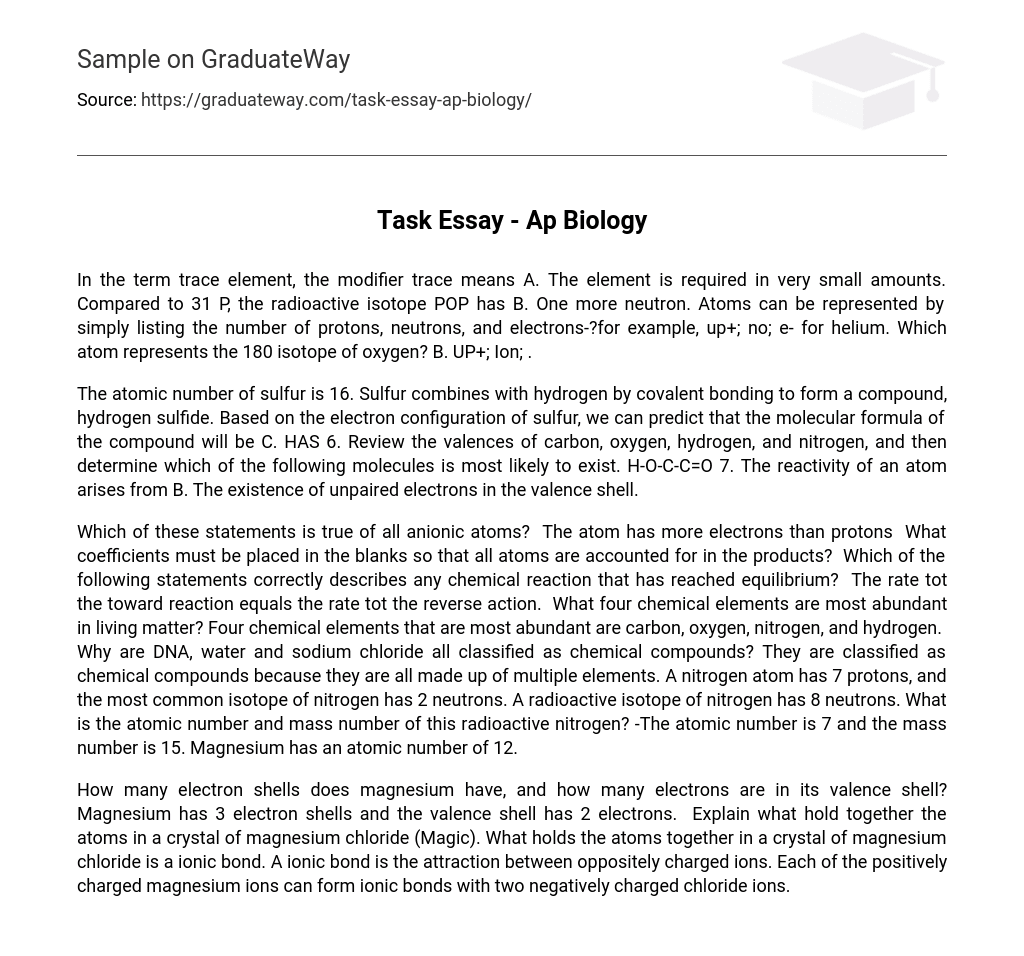In the term trace element, the modifier trace means A. The element is required in very small amounts. Compared to 31 P, the radioactive isotope POP has B. One more neutron. Atoms can be represented by simply listing the number of protons, neutrons, and electrons-?for example, up+; no; e- for helium. Which atom represents the 180 isotope of oxygen? B. UP+; Ion; .
The atomic number of sulfur is 16. Sulfur combines with hydrogen by covalent bonding to form a compound, hydrogen sulfide. Based on the electron configuration of sulfur, we can predict that the molecular formula of the compound will be C. HAS 6. Review the valences of carbon, oxygen, hydrogen, and nitrogen, and then determine which of the following molecules is most likely to exist. H-O-C-C=O 7. The reactivity of an atom arises from B. The existence of unpaired electrons in the valence shell.
Which of these statements is true of all anionic atoms? The atom has more electrons than protons What coefficients must be placed in the blanks so that all atoms are accounted for in the products? Which of the following statements correctly describes any chemical reaction that has reached equilibrium? The rate tot the toward reaction equals the rate tot the reverse action. What four chemical elements are most abundant in living matter? Four chemical elements that are most abundant are carbon, oxygen, nitrogen, and hydrogen. Why are DNA, water and sodium chloride all classified as chemical compounds? They are classified as chemical compounds because they are all made up of multiple elements. A nitrogen atom has 7 protons, and the most common isotope of nitrogen has 2 neutrons. A radioactive isotope of nitrogen has 8 neutrons. What is the atomic number and mass number of this radioactive nitrogen? -The atomic number is 7 and the mass number is 15. Magnesium has an atomic number of 12.
How many electron shells does magnesium have, and how many electrons are in its valence shell? Magnesium has 3 electron shells and the valence shell has 2 electrons. Explain what hold together the atoms in a crystal of magnesium chloride (Magic). What holds the atoms together in a crystal of magnesium chloride is a ionic bond. A ionic bond is the attraction between oppositely charged ions. Each of the positively charged magnesium ions can form ionic bonds with two negatively charged chloride ions.





